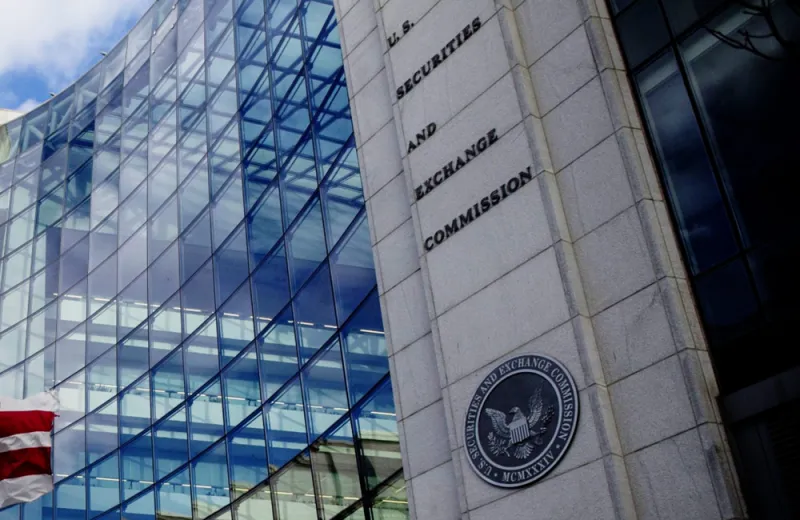The Securities and Exchange Commission is delivering on its promise to heighten scrutiny and demand more transparency of the private markets.
Last week, the SEC issued a proposal to expand reporting for certain investment advisors and private funds. If approved in its current form, the new rule will require hedge funds and private equity firms to disclose more information to the regulator within a shorter period of time. SEC chairman Gary Gensler has said that the Commission needs information about “events that could be relevant to financial stability and investor protection, such as extraordinary investment losses or significant margin and counterparty default events.”
The SEC’s tightening oversight comes after a banner year for the private fund industry. Private equity firms broke the trillion-dollar milestone, while venture capitalists saw their assets exceed $300 billion for the first time.
Market participants, who have been waiting for the details since the SEC first said it was considering its options in the fall, are now getting a picture of the proposed regulations and what they will mean in practice.
The first regulatory step starts from Form PF, a 64-page document that private equity firms and hedge funds file to the SEC on an annual or quarterly basis depending on their size. Currently, Form PF asks large funds to disclose information about net asset value, borrowing status, and other key asset allocation details.
“Form PF right now is pretty basic,” said Amy Lynch, a former SEC regulator and founder of consulting firm FrontLine Compliance. Under the new rule, however, private funds might be required to “report more information and give [the regulators] more insight into the potential [systemic] risks that their activities could cause.” That may include data from hedge funds about large redemptions and investor requests for withdrawals, according to Lynch. Although information on Form PF is only available to the SEC right now, Lynch believes regulators may ultimately want the information to be disclosed to the public. If redemption information does become public, the former regulator is concerned other investors in the funds would race to get their money out, causing larger problems.
“I think there’s a general fear within the industry that, if that’s the kind of information that gets out, it could be the end of a particular investment,” Lynch said.
The SEC is concerned about two types of potential systemic risks from hedge funds — sales of distressed assets and the possibility that one fund’s problems could be transmitted to other parties, such as prime brokers, according to Mark Perlow, partner at law firm Dechert. There hasn’t been the same clarity on PE risks. “Even if these risks were valid, the SEC statements in the release were not able to articulate anything close to this for private equity funds,” he said.
The Commission is also proposing that large hedge funds and private equity firms report “events that indicate significant stress at a fund that could harm investors or signal risk in the broader financial system” within one business day. For PE funds with more than $1.5 billion in assets under management — a change to the previous $2 billion threshold — that could mean events like significant losses, termination of a fund, or disputes between limited partners and general partners.
Yet the immediate disclosure of such events may not give the SEC the kind of “early warning signal” that it’s looking for, according to Brian Daly, partner at the law firm Akin Gump Strauss Hauer & Feld. These events might simply mean the fund engaged in something like a GP-led secondary transaction, in which it moves a promising portfolio company from an existing fund into a newly created one, he explained.
Daly added that the filing process could be time-consuming and direct the attention of management to regulatory compliance, rather than to addressing the reported issues themselves. If regulators are finding only idiosyncratic risks that are unlikely to affect the market as a whole, fund managers may resent that every decision they make is being second-guessed by the regulator, he added.
Of course, few financial firms ever welcome more regulation or the cost of complying with new rules. The American Investment Council, a Washington, D.C.-based lobbying group for private equity firms, said it has “concerns that this new proposal will burden firms with unnecessary paperwork, even though private equity poses no systemic risk.”
But publicly traded alternatives manager Blackstone, which has an astounding $881 billion in assets under management as of December, appeared nonchalant about the regulatory headwinds. When asked about the recent SEC proposal in an earnings call last week, Blackstone’s chief operating officer Jonathan Gray said the firm would adapt and comply with the policies.
“That’s just the way we run our business,” Gray said. “We understand that we’re in an environment of heightened scrutiny, and we will obviously respond to it in the right way.” As a public company, Blackstone is already bound by more disclosure requirements than its private counterparts.
Brian Schaeffer, managing director of InvestX, the private equity marketplace, said the SEC ultimately wants to incorporate a wider range of investors under its protection. “What [the regulators] are recognizing is that if pension funds and mutual funds are going to start investing in private companies and pre-IPO giants, then they need to spend a lot more time [thinking about] how to protect the public from these types of investments,” he said.







